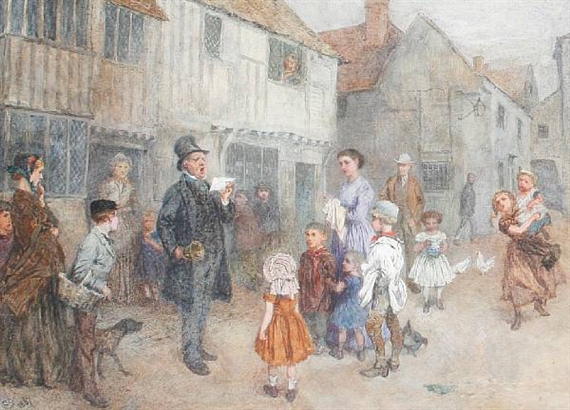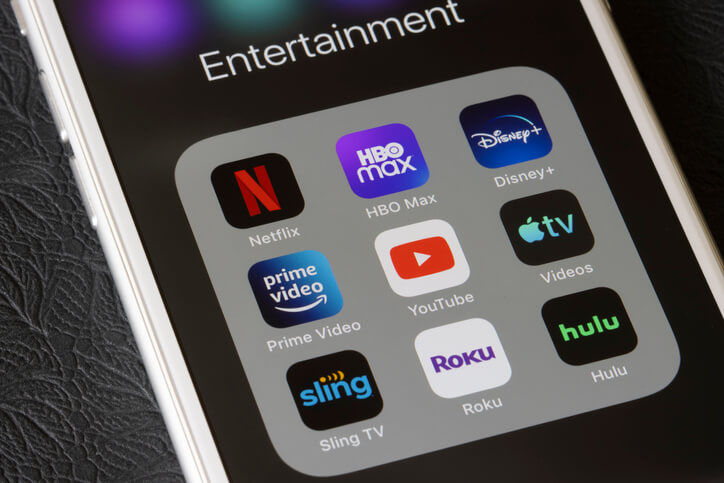Picture this: a town crier in medieval times, enthusiastically proclaiming the arrival of a new shipment of ale. Fast forward to Super Bowl Sunday, where millions eagerly await the next iconic commercial.
The journey from town criers to Super Bowl ads is a fascinating one.
Join us as we embark on a whimsical adventure through the history of marketing and advertising, exploring the quirks, breakthroughs, and memorable moments that have shaped the way we promote products and ideas.
A World of Word-of-Mouth

Image Source: Charles Green
In the early days, marketing was strictly by word-of-mouth. Town criers, known for their booming voices and flamboyant proclamations, were the original influencers. They would shout about the finest mead, the most exquisite fabrics, and the occasional miracle potion. Who could forget the charm of the snake oil salesman, with promises of curing all ailments? Word-of-mouth marketing was truly a wild frontier.
Fun Fact: Early “snake oil salesmen” used to travel with circuses and carnivals, selling mysterious elixirs with dubious health claims. This practice coined the term “snake oil salesman” for anyone selling fraudulent products.
The Birth of Print

With the invention of the printing press by Johannes Gutenberg in the 15th century, marketing found a new home on paper. Early advertisements were more like classifieds, offering goods and services ranging from exotic spices to spectacles. The evolution of print marketing took us from broadsheets to magazines and, eventually, colorful posters.
Fun Fact: The first newspaper ad in America, published in 1704, offered a reward for the return of stolen horses. Advertising in newspapers began with classifieds and evolved into more creative and engaging formats.
Soap Operas and Radio Jingles

Image Source: Peter Reckell & Kristian Alfonso Fan Fest
The 20th century brought a new medium to the forefront: radio. Soap operas got their name from the soap companies that sponsored them. And who could forget the jingles that burrowed into our brains, like “I’d like to buy the world a Coke” or “Plop, plop, fizz, fizz”? Radio ads became a cultural phenomenon and set the stage for the rise of television.
Fun Fact: The term “soap opera” originated because early radio dramas were often sponsored by soap companies, such as Procter & Gamble and Colgate-Palmolive, which produced the shows to promote their products.
Mad Men and the Golden Age of Advertising
Television transformed marketing into a visual spectacle. The 1960s ushered in the Mad Men era, where creative geniuses like Don Draper crafted unforgettable campaigns. Iconic slogans such as “Have a Break, Have a Kit Kat” and “Just Do It” became part of our cultural lexicon. Advertising had officially become an art form.
Fun Fact: The “Virginia Slims” campaign in the 1960s famously used the slogan “You’ve come a long way, baby” to appeal to women’s changing roles and aspirations, marking a significant shift in advertising’s portrayal of gender roles.
The Digital Revolution

The internet arrived like a whirlwind, revolutionizing how we market and consume information. Banner ads, pop-ups, and email spam became the norm, but so did the birth of social media influencers and viral marketing campaigns. Suddenly, anyone with a computer could reach a global audience.
Fun Fact: The world’s first email marketing blast was sent by Gary Thuerk in 1978 to 393 recipients, promoting a new computer model. It generated $13 million in sales, showing the potential of email marketing.
Super Bowl Smackdown

Every year, the Super Bowl brings us epic showdowns, not just on the field but also on our screens. Super Bowl commercials have become a cultural phenomenon, with advertisers competing for our attention and our hearts. From talking frogs to dancing babies, the Super Bowl ads are a highlight of the game.
Fun Fact: The cost of a 30-second Super Bowl ad has skyrocketed over the years. In the first Super Bowl (1967), a 30-second spot cost $42,000. By 2021, the price had reached $5.5 million.
Connected TV (CTV): A New Era in Streaming Entertainment

As the digital landscape evolved, so did the way people consumed content. The introduction of Connected TV, or CTV, represented a significant shift in how audiences watched television. CTV refers to the streaming of television content over the internet, allowing viewers to watch their favorite shows and movies on a variety of devices. CTV offers advertisers a highly targeted and measurable way to reach audiences. Advertisers could now deliver tailored messages to viewers based on their viewing habits and preferences.
Fun Fact: Netflix, one of the pioneers of CTV, began as a DVD-by-mail service in 1997 but transitioned to online streaming in 2007. This move revolutionized the entertainment industry and led to the rise of subscription-based streaming services.
The Future of Marketing: AI and Beyond

As we hurtle into the future, marketing is embracing artificial intelligence, data analytics, and personalized experiences. Chatbots offer customer support, while recommendation algorithms suggest products we never knew we needed. The future promises even more exciting and unexpected developments.
Fun Fact: AI-driven platforms, chatbots, and virtual assistants, like ChatGPT, Siri, and Alexa, are becoming integral to marketing.
More Just For Fun
- In 2018, the first-ever ad in space was projected onto the International Space Station, marking an unprecedented frontier in advertising.
- The Guinness World Record for the largest advertising billboard measures over 19,000 square meters and is located in Saudi Arabia. It’s so massive that it can be seen from space!
- The first-ever recorded product placement in a film occurred in 1919 when Hershey’s chocolate bars were featured in the silent film “The Garage.”
- The Guinness World Record for the largest QR code made of trees was achieved in 2017 in Russia. It was created by planting different species of trees to form a functioning QR code when viewed from above.
Conclusion
Marketing and advertising have come a long way since the town crier’s shout. From radio jingles to Super Bowl extravaganzas and the world of CTV, the history of marketing and advertising is a tale of creativity, innovation, and the relentless pursuit of our attention.
As we look ahead to what’s next, one thing is certain: the world of marketing and advertising will continue to surprise and delight us, one clever campaign at a time.





